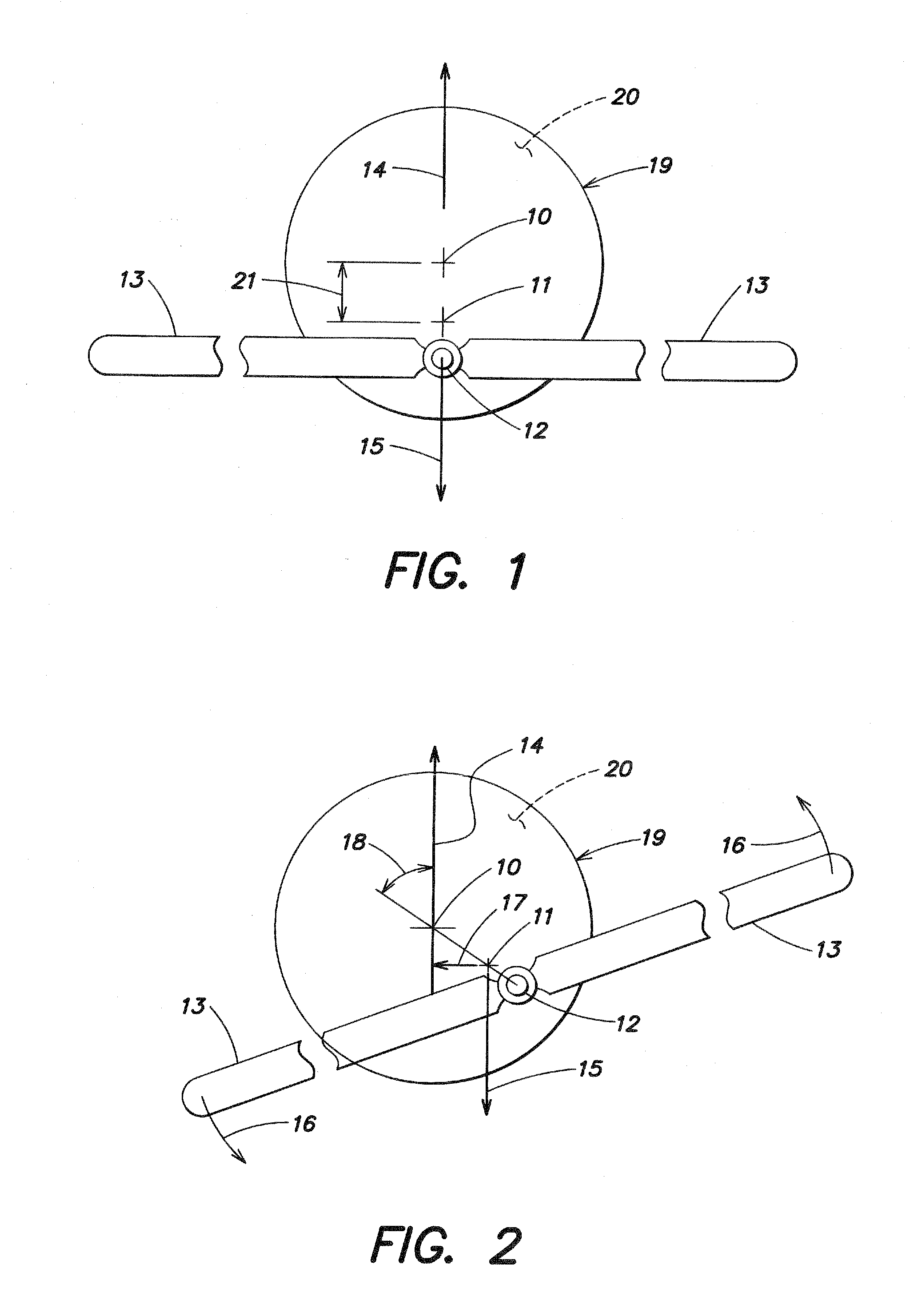Airborne stabilized wind turbines system
a wind turbine and stabilizer technology, applied in the direction of wind turbines, motors, electrical equipment, etc., can solve the problems of limited land for building the towers to support such wind turbines, high construction cost, and intense vibration, and achieve the effect of angular stability
- Summary
- Abstract
- Description
- Claims
- Application Information
AI Technical Summary
Benefits of technology
Problems solved by technology
Method used
Image
Examples
Embodiment Construction
[0040]Referring to the accompanying drawings
[0041]FIG. 1 and FIG. 2 are schematic drawings of the system of the present invention, many details are not showing in these drawings and will be showed and explained later, the purpose of these simple drawings is to explain the basic principals of the system of the present invention. 19 is sealed cylindrical body; 19 is filled with lighter than air gas 20, such as helium or hydrogen;
[0042]The system has two similar bodies 19, one of them is not showing in the drawings. The two bodies 19 are lighter than air and are generating a lift force 14 (14=L) which caused the system to be airborne in the atmosphere. The two bodies 19 are connected to each other rigidly by a shaft 12; the shaft 12 is placed below the symmetrical center of the two 19 bodies; a wind turbine 13 is rotatably mounted to the shaft 12, in a way that allow the turbine 13 to rotate relative to the shaft 12. The turbine 13 is connected through transmission to a generator, (the...
PUM
 Login to View More
Login to View More Abstract
Description
Claims
Application Information
 Login to View More
Login to View More - R&D
- Intellectual Property
- Life Sciences
- Materials
- Tech Scout
- Unparalleled Data Quality
- Higher Quality Content
- 60% Fewer Hallucinations
Browse by: Latest US Patents, China's latest patents, Technical Efficacy Thesaurus, Application Domain, Technology Topic, Popular Technical Reports.
© 2025 PatSnap. All rights reserved.Legal|Privacy policy|Modern Slavery Act Transparency Statement|Sitemap|About US| Contact US: help@patsnap.com



